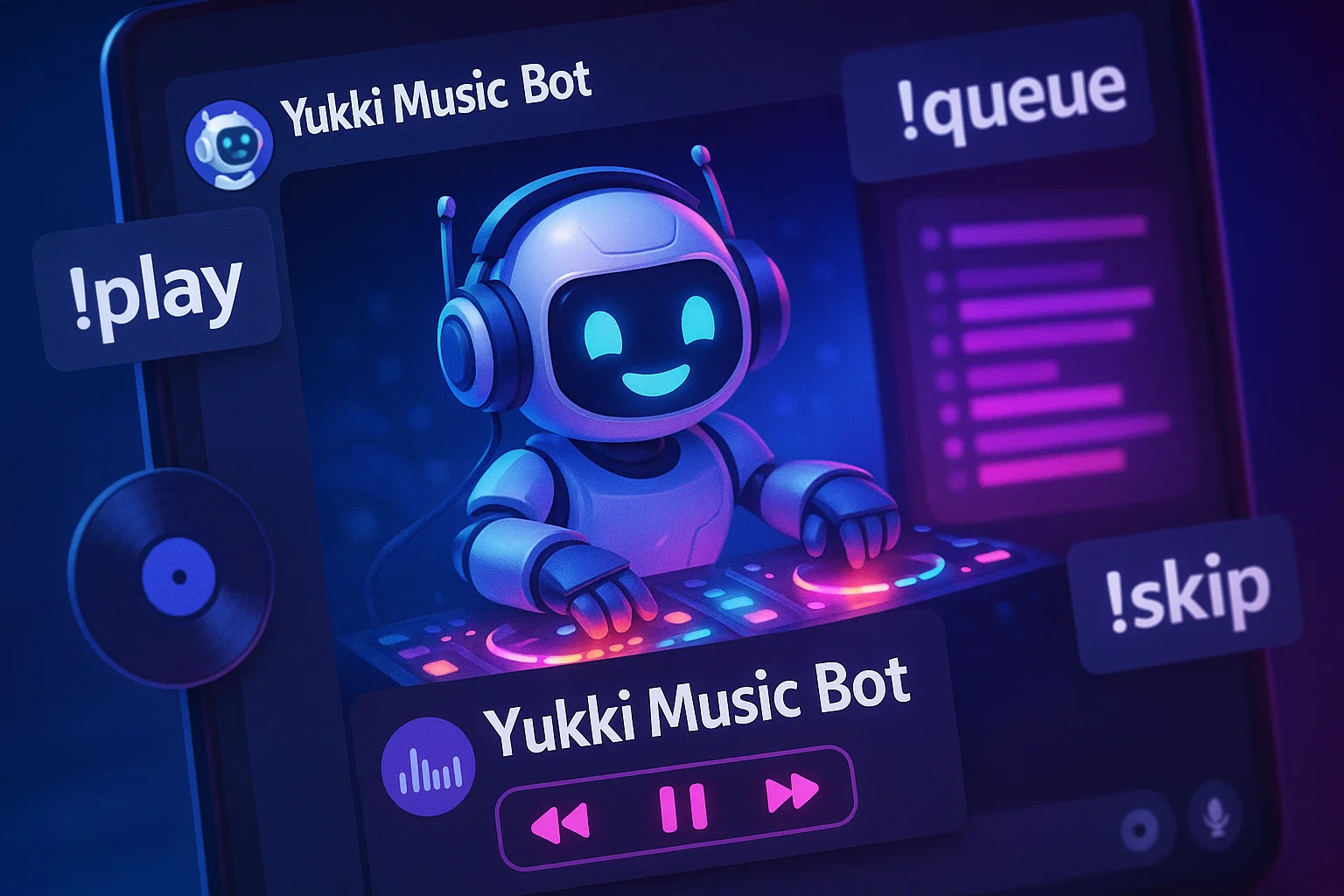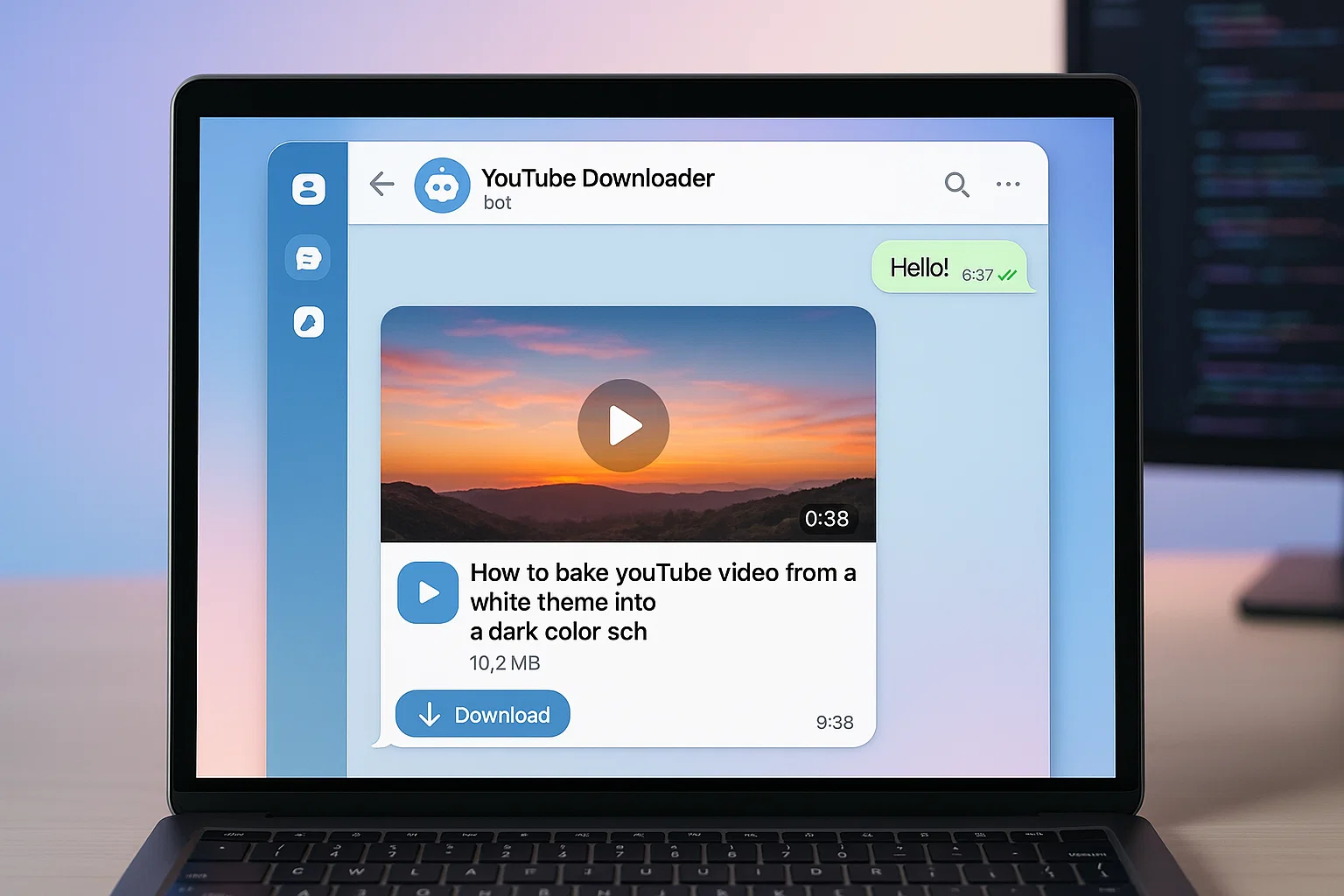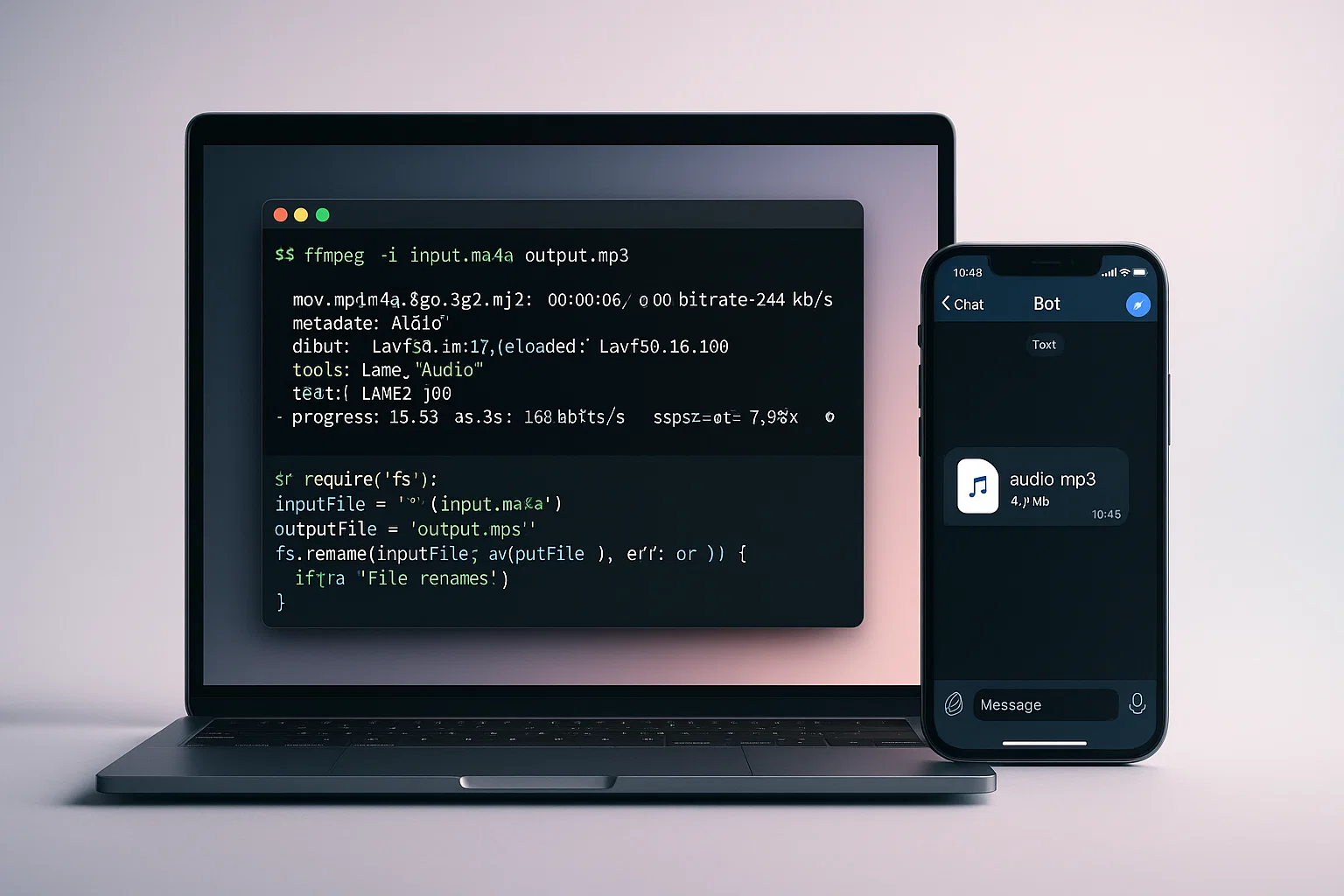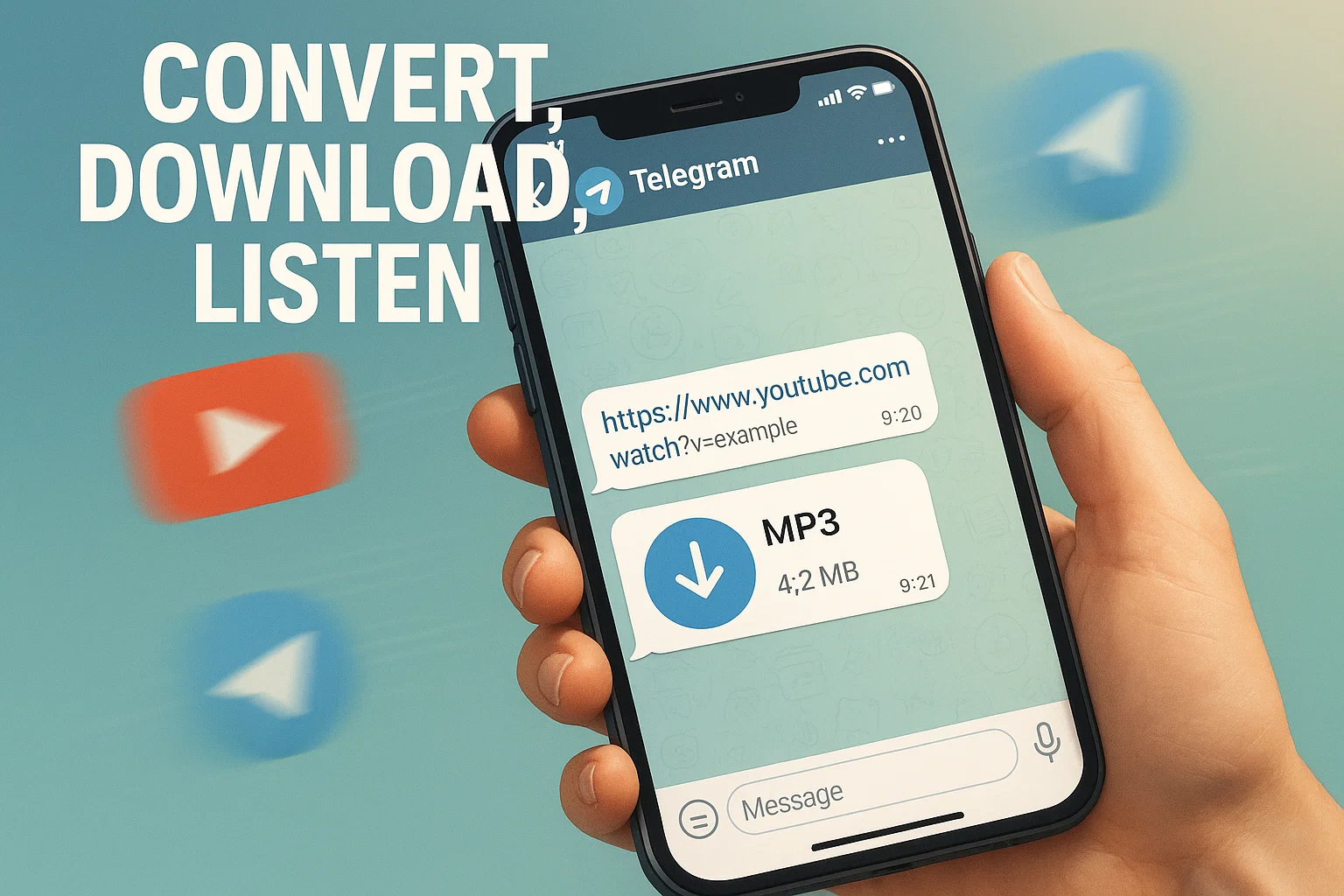Yukki music bot delivers smooth streaming, playlist control, and queue management inside Discord. It helps communities run parties, study sessions, and radio channels without leaving chat, making playback simple for everyone to join, control, and enjoy, with low latency and easy commands.
Introduction
Yukki music bot makes adding music to your Discord server instantly useful and simple, whether you want background playlists or live DJ sessions. Intent: informational and transactional — you will learn what it does, how to install or self-host it, and which tradeoffs matter when scaling. In this guide I cover core integrations like Discord voice, Lavalink for audio processing, and common sources such as YouTube and Spotify. You will get practical setup steps, code examples, deployment tips, and a short checklist for compliance and moderation. I'll also show quick troubleshooting steps if audio is distorted or the bot cannot join voice. In my experience, starting with a small, stable setup avoids expensive rewrites later, and that approach works well for communities of any size, from private study groups to public game servers. By the end you'll know whether to pick a hosted bot or build one, and how to secure playback for your members.
What is Yukki music bot and why it matters
Understanding the Yukki music bot
A Yukki music bot is a specialized music bot for Discord that focuses on reliable audio playback, queue management, and easy controls. At heart it connects chat commands to an audio backend, often using a Lavalink node for decoding and streaming. This separation allows the bot to manage text commands in your server while offloading heavy audio processing to a dedicated node.
How audio streaming works
When you tell the bot to play a track, the bot searches an external source, for example YouTube or Spotify, then requests the audio from a streaming node. Lavalink returns a track stream which the bot forwards into the voice channel, handling buffering, codecs, and resampling. This setup is why many robust music bots are stable even on busy servers.
Why it matters for communities
Music keeps communities active, synchronized, and engaged. A well-configured Yukki music bot reduces admin load because users can self-serve queues, vote-skip, and manage playlists without staff intervention. For moderators, the bot can enforce DJ roles to prevent abuse, provide logs for playlists, and expose controls via slash commands for modern UX.
Sub-features you should expect
- Search and play, including by keyword or link.
- Queue management, with pagination for long queues.
- Playlist import and export, often supporting common formats.
- Volume and equalizer controls, sometimes through Lavalink filters.
- Cross-server settings, so you can customize prefix and permissions per server.
Technical background
Implementations vary, but common stacks are Node.js with discord.js or Python with discord.py, plus a Lavalink server, and a persistent store like Redis or MongoDB for saved playlists. This architecture balances performance with maintainability: the chat bot is stateless where possible, and track state lives in a fast store.
Scaling and reliability
As your server grows, you may see more simultaneous voice channels and higher resource needs. A production Yukki music bot will use multiple Lavalink nodes, sharding for Discord connections, and connection pools to avoid overloading a single node. Proper metrics let you add nodes before users notice issues. Also consider caching track metadata to reduce API calls and respect rate limits. Privacy and storage are important too: store only necessary playlist metadata and avoid saving raw user data unless you provide clear delete options. Many communities choose yukki music bot for its simplicity and predictable behavior, especially when the bot is paired with a stable Lavalink node. If you want low latency, configure the node close to your server's region and tune the yukki music bot settings.
Setup and deployment, step-by-step
Follow these steps to get a basic Yukki music bot running, either by inviting an existing hosted bot or self-hosting a custom instance.
- Create and configure the bot account
- Create an application in the Discord Developer Portal, add a bot user, set OAuth scopes for bot and applications.commands, and grant voice and message permissions.
- Copy the token into a secure environment variable, never commit it to source control.
- Host a Lavalink node
- Run a Lavalink node on a VPS or use a managed provider, configure node password and limits, and test connectivity from your bot.
- Build the bot logic
- Use a Lavalink client like erela.js or Wavelink with discord.js or discord.py, implement search, play, skip, queue, and slash commands.
- Persist queues and deploy
- Use Redis for ephemeral queues and MongoDB for playlists, deploy with PM2 or Docker, and monitor CPU and network usage on your Lavalink node.
Minimal play command example
// Minimal Node.js play example
// Replace searchTrack and joinVoiceChannel with your library calls
if (!msg.member.voice.channel) return msg.reply('Join a voice channel first');
const query = msg.content.slice(6).trim();
try {
const track = await searchTrack(query); // implement with Lavalink client
const player = await joinVoiceChannel(msg.member.voice.channel); // create or get player
await player.play(track); // send track to Lavalink
msg.reply(`Now playing: ${track.title}`);
} catch (err) {
console.error(err);
msg.reply('Failed to play the requested track');
}
Quick testing
Invite the bot to a staging server, try play, queue, and skip, and verify permissions. If the bot cannot join, check voice state intents and Connect permissions. If you prefer a ready bot, invite a hosted yukki music bot instance and test commands before moving to self-hosting. When self-hosting, name your service clearly and monitor the yukki music bot logs to avoid silent failures. For public servers, mention in your rules how yukki music bot handles playlists and privacy.
Best practices and recommended tools
Design your Yukki music bot for reliability, security, and discoverability. Below are practical best practices and three recommended tools to speed development.
Best practices
- Cache aggressively, especially for popular tracks and playlists, to avoid hitting external APIs.
- Use role-based controls so only trusted users can skip or stop music.
- Provide clear help and usage feedback, for example send a short usage embed when a command is misused.
- Monitor and alert for node failures, high latency, and memory leaks.
Tool recommendations
- Discord.js (Node.js ecosystem)
- Pros: large community, extensive examples, good support for slash commands. Cons: major version changes can require code updates.
- Install tip: run
npm install discord.jsand follow the quickstart. - Lavalink (audio node)
- Pros: efficient audio decoding and streaming, battle tested by many bots. Cons: requires a JVM and extra hosting.
- Install tip: download the Lavalink jar and set the application properties to match your bot.
- Erela.js or Wavelink (Lavalink client libraries)
- Pros: simplified connection to Lavalink, session management, and filters. Cons: library differences across forks.
- Install tip: pick the client that matches your runtime and follow its examples.
Operational tips
Run Lavalink on a separate host if you expect many concurrent voice streams; this keeps CPU-heavy audio work off your bot process. Use PM2 or Docker to manage bot processes and restart on failure. Provide a status command so admins can quickly see Lavalink health and remaining node capacity. Consider adding simple analytics like total plays per day to understand engagement patterns.
Small UX suggestions
Offer commands that are discoverable and short, for example play, queue, skip, loop, and saveplaylist. Use embeds for richer responses, and add reactions for quick skip votes. Keep command cooldowns for free users to prevent spam, and allow premium or trusted roles higher limits. In many cases, replacing a generic music tool with yukki music bot focused features improves retention, because users can easily save and share playlists. Whenever you test new features, run them first in a staging server so your live audience does not face yukki music bot downtime.
Challenges, legal considerations, and troubleshooting
Running a Yukki music bot is straightforward technically, but there are operational and legal challenges. Platforms like YouTube and Spotify have terms that limit how audio can be accessed or redistributed. Additionally, hosting audio streams costs bandwidth and CPU. Keep these realities in mind when you plan features like background radio or persistent streaming.
Troubleshooting checklist
- Bot cannot join voice: check voice permissions and voice state intent, ensure the bot has Connect and Speak.
- No audio but joined: verify Lavalink connection, node password, and that the player is receiving tracks.
- Distorted audio: check node CPU, reduce bitrates, and verify filters.
- Rate limit errors: add caching, exponential backoff, and request batching.
Compliance checklist
- Keep bot token and Lavalink passwords secure, rotate if exposed.
- Document what user data you collect, and provide a deletion route on request.
- Follow API ToS for YouTube, Spotify, and other providers.
- Respect copyright and avoid storing or serving files that violate licenses.
- Provide a simple privacy notice in your server rules or bot help command.
Alternatives
If legal or hosting costs are a concern, use a hosted music bot provider that handles streaming and licensing, or use webhooks pointing to approved streaming services. Another alternative is a lightweight playlist bot that only links to external streams rather than streaming audio through your server.
If you operate commercially, know that yukki music bot usage may intersect with licensing questions when streaming copyrighted material; document your decisions clearly. Maintain an incident log that records outages involving yukki music bot and steps taken to remediate them.
A clear help system and discoverable commands reduce user confusion and support requests, improving adoption for chat-based tools. (Google)
Caching and rate limiting are essential to maintain stability when calling third-party APIs from chat bots. (Moz)
Useful resources: Discord developer documentation, Google developer guidelines, Moz on technical stability, SEMrush for SEO guidance.
Conclusion and next steps
Yukki music bot provides a flexible, reliable way to add music to Discord servers, with choices between hosted convenience and self-hosted control. Start with a small, well-tested setup, add caching and role controls, and monitor your Lavalink nodes for stability. Welcome to Alamcer, a tech-focused platform created to share practical knowledge, free resources, and bot templates. Our goal is to make technology simple, accessible, and useful for everyone. Provide free knowledge articles and guides in technology. Offer ready-to-use bot templates for automation and productivity. Deliver insights to help developers, freelancers, and businesses. Custom development services for bots and websites, on request. Ready to ship a bot or get a template? Contact Alamcer for templates and custom builds to accelerate your project.
Key takeaways:
- Use Lavalink and a good host for reliable playback.
- Cache API results and implement rate limit handling.
- Control playback with DJ roles and clear permissions.
FAQs
What is yukki music bot?
Yukki music bot is a Discord music bot that handles streaming, playlists, and queue management. It connects chat commands to an audio backend like Lavalink, supports search by keyword or link, and provides playback controls so users can play, skip, loop, and save playlists inside a Discord server.
How do I invite yukki music bot to my server?
To invite a hosted instance, use the bot provider’s invite link and authorize the bot with bot and applications.commands scopes, plus voice permissions. If self-hosting, create a Discord application, generate an OAuth invite with required scopes, and invite that bot to your server using the generated link.
Do I need to self-host or can I use a hosted version?
You can choose both. Hosted versions are quick and low maintenance, while self-hosting gives you full control and privacy. Self-hosting needs a VPS, Lavalink, and monitoring, but avoids some rate limits and lets you customize features.
What sources can yukki music bot play from?
Most setups support YouTube, Spotify metadata, and direct stream links. Playback often uses YouTube or other streamable sources for audio. Licensing and API ToS vary, so confirm each provider’s rules before offering features that cache or redistribute audio.
How do I troubleshoot no audio or join issues?
Check that the bot has Connect and Speak permissions, and that voice state intent is enabled. Verify the Lavalink node is reachable and healthy, check node CPU, and review logs for authentication or rate limit errors. Restart the node if necessary and test with a short track.
Is storing playlists compliant with privacy laws?
Storing minimal playlist metadata is usually low-risk, but if you store personal data, you must comply with privacy laws like GDPR and CCPA. Provide clear deletion options and document what you store. For legal advice, consult a professional.
How do I manage access to playback controls?
Create a DJ role that grants skip, stop, or queue control. Use slash command permission overrides and role checks in your code. This keeps playback from being abused and maintains a predictable experience for listeners.
Can yukki music bot be monetized?
Monetization is complex, because music licensing and API terms may limit commercial use. If you plan to monetize, consult platform ToS and a legal advisor. Alternatives include offering non-audio features, premium roles, or custom development services.
How do I scale yukki music bot for large servers?
Use sharding for Discord connections, run multiple Lavalink nodes, and employ Redis for caching. Monitor metrics like plays per minute and node CPU, add capacity proactively, and use stateless bot workers to allow horizontal scaling.
Compliance & disclaimer
This article is informational and not legal advice. Respect privacy laws, API terms of service, and copyright. Provide clear privacy notices and deletion options for user data. For legal or regulatory questions about music licensing or data protection, consult a qualified professional.



